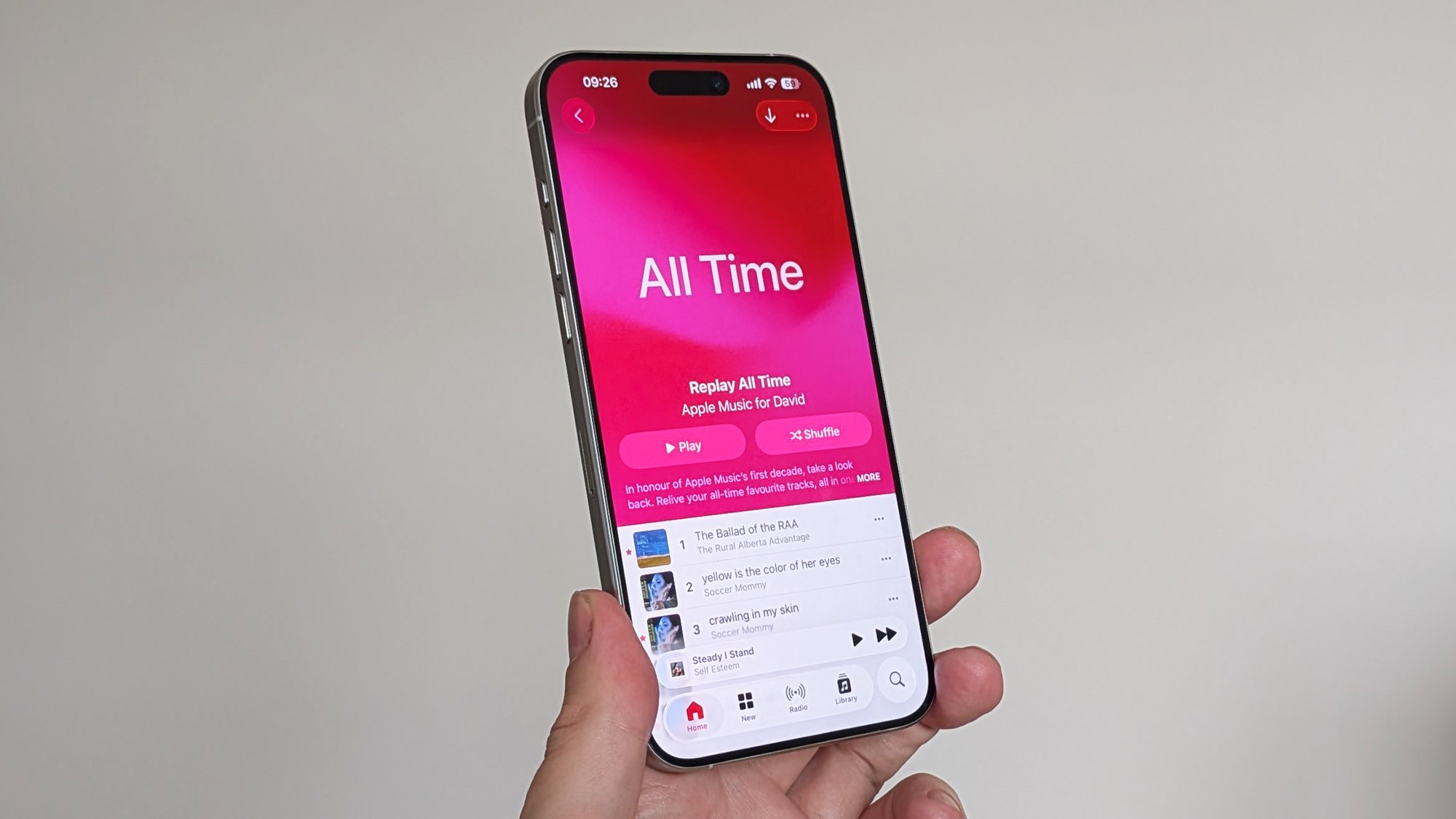It’s been 10 years since the Apple Music streaming service launched, and Apple is marking the occasion in several ways: with a new studio space in Los Angeles, with special programs on Apple Music Radio (including a countdown of the top 500 most-streamed songs on Apple Music), and with a new Replay All Time playlist that gives you your overall listening stats from the day you first signed up.
Replay All Time builds on the annual summary of your listening habits that Apple Music puts out near the end of each year. These yearly recaps are available across all the major music streaming services, and have proven popular—they’re a fun way to look back on changing tastes and forgotten favorites. And now, you’re not limited to one year.
If you’re interested in long-term listening stats, though, there’s already a better app for the job that I’ve been making use of for much longer than Apple Music has been around. It works across multiple platforms, and multiple services, and has been in business for more than 20 years.
How to find your Replay All Time playlist
The Replay All Time playlist is available everywhere you can find Apple Music. Open Apple Music on iOS, Android, macOS, Windows, or the web, and you should see Replay All Time prominently displayed on the Home tab, alongside the usual selection of algorithmically generated playlists.
Select the playlist and it pops up like any other: You get buttons to Play and Shuffle it, and if you tap the three dots alongside the tracks, you’re able to save it permanently to your library, add it to an existing playlist or the current queue, mark all the tracks as favorites, and share the playlist with other people.
Credit: Lifehacker
That sharing option is part of the appeal of these playlists—you can let the whole world know just how faithful you’ve been to your favorite artists throughout the years, or just how much your tastes have changed. You can share a link to the playlist in multiple apps, and even embed it on the web.
Choose to add the playlist to your library (via the three-dot menu) and you can bring up the stats for these tracks in the Apple Music desktop app: With the playlist on screen, choose View > as Songs to show more columns, then View > Show View Options to pick the stats (such as Plays and Last Played) you want displayed.
How to use Last.fm to track your listening
If you enjoy digging into listening stats, there’s another service worth knowing about that’s been around much longer than Apple Music: Last.fm. It keeps tabs on every song you listen to (a process the app calls “scrobbling”), and can then break down stats by year, month, week, or day.
Part of the appeal of Last.fm is that it has apps and extensions available for multiple streaming services, across mobile and desktop—which is handy if you’ve got several music streaming subscriptions or if you jump between them. From a YouTube video on the web to a Spotify playlist on your phone, everything gets logged.
Credit: Lifehacker
I’ve been using Last.fm for so long, I can jump back to any time period and rediscover songs I’ve forgotten about: If I want to, I can see exactly which album was my favorite in March 2010 (it was Wait for Me, by Moby). Last.fm also excels at recommending new music, not least because it has so much listening data to analyze.
You can sign up for Last.fm for free and start scrobbling via the wide range of official and unofficial tools built for the job. For $5 a month or $50 a year, you can also sign up for Last.fm Pro, which gives you even more insights into your listening history and even more in the way of analysis (comparing your taste to other Last.fm users, for example).
